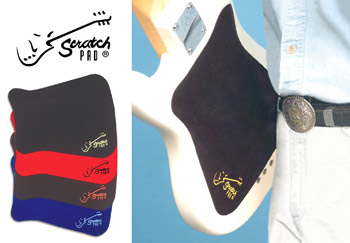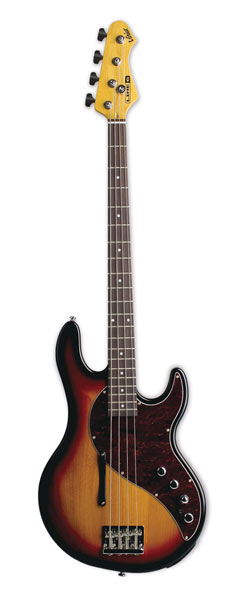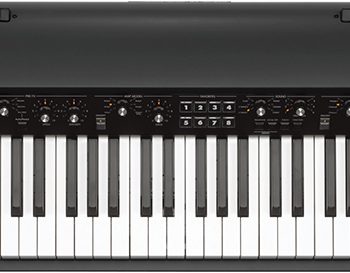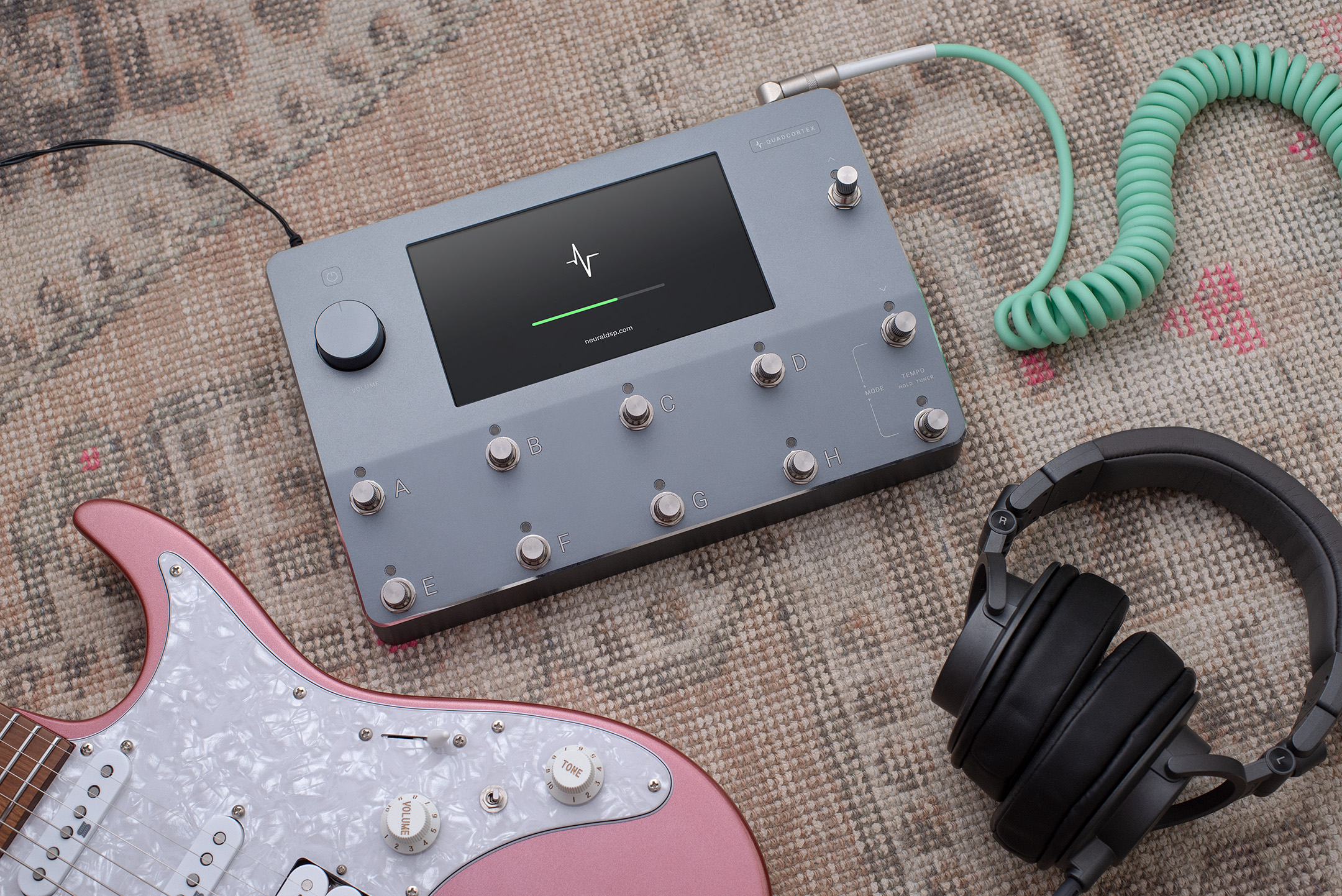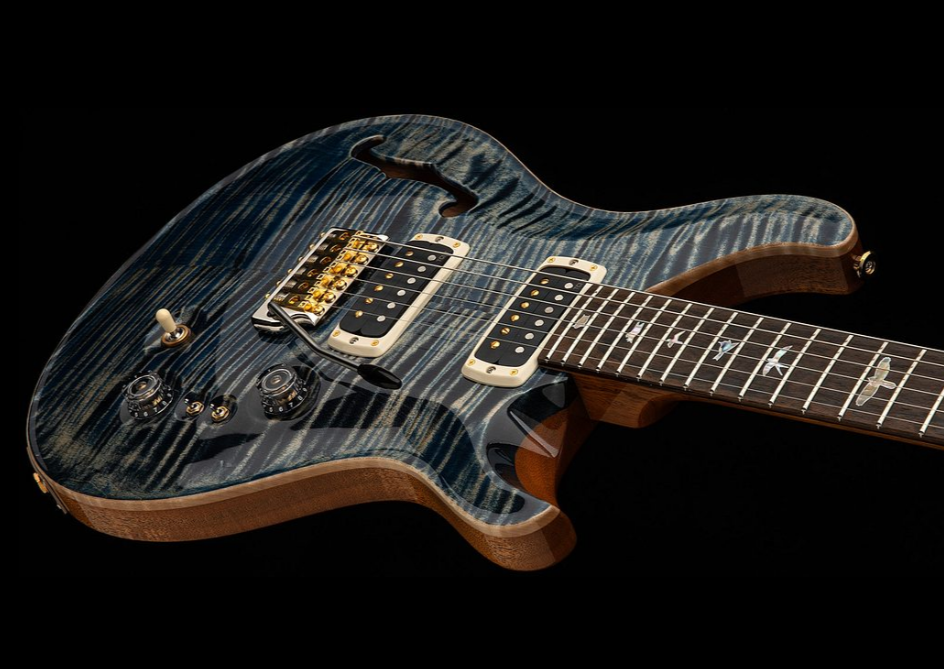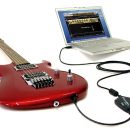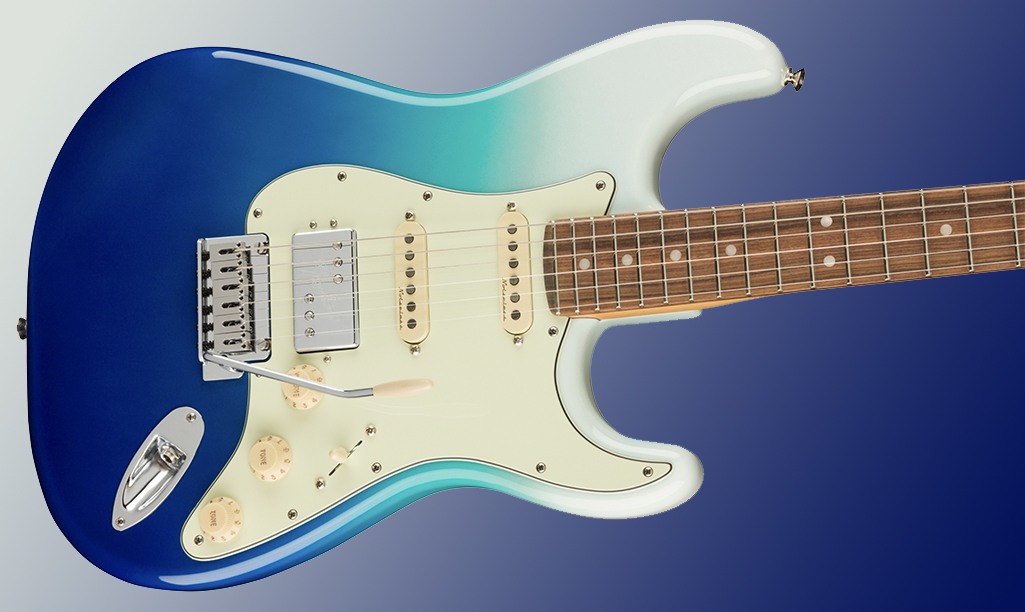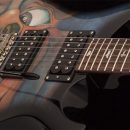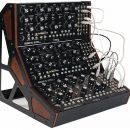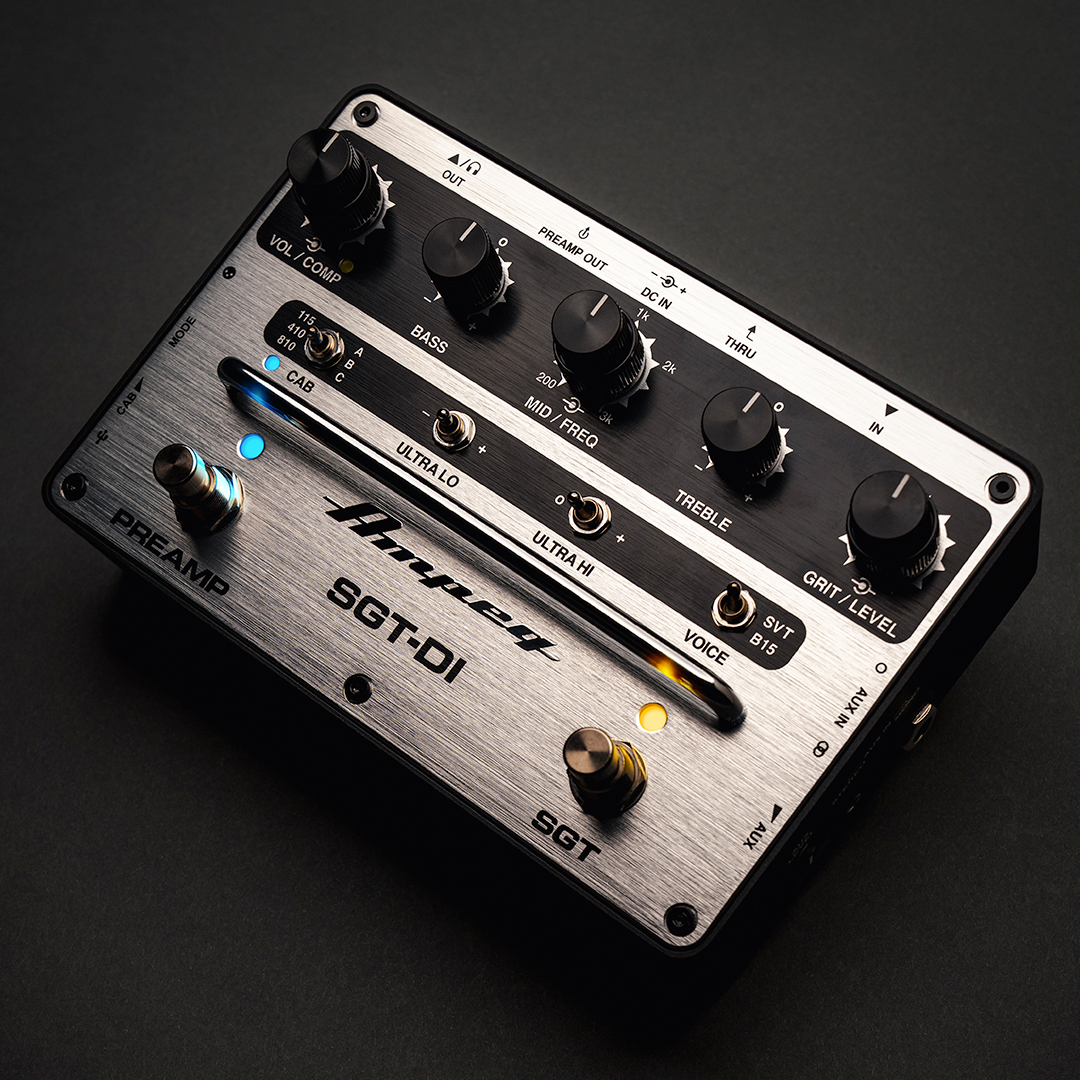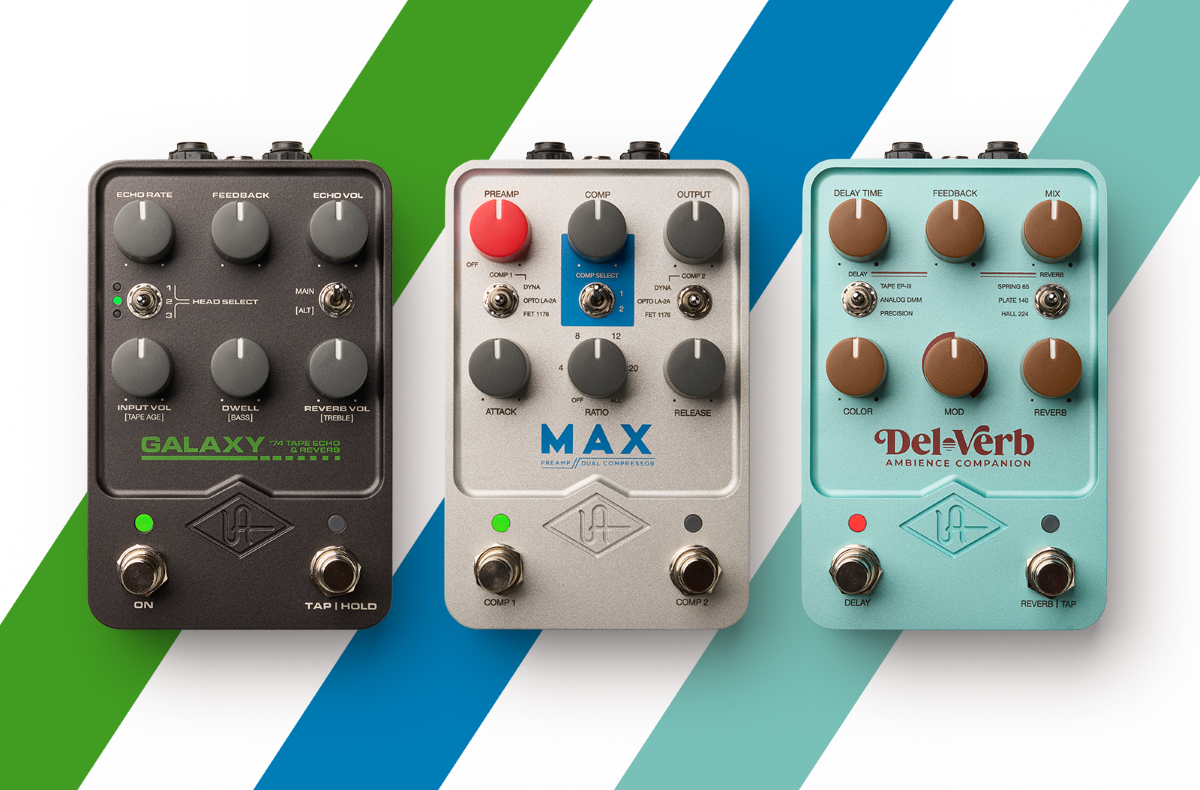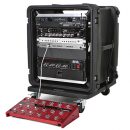The Eric Johnson signature Stratocaster is Fender’s latest offering in their esteemed Artist series of guitars, and one of the most highly anticipated and long-awaited signature guitars in the company’s history. Eric is known to have a reputation for laboring over the smallest or seemingly least significant details of his instrument and amplification set-up in his quest for ultimate tone, so expectations are high for this guitar’s quality, tone, and playability.
| Category | Value | Rating |
| Features | 20% | |
| Usability | 25% | |
| Sound | 25% | |
| Documentation & Support | 10% | |
| Price | 20% | |
| OVERALL RATING = 3.4 3.6 stars or better: Outstanding, WIHO Award 3 stars or better: Worth considering 2 stars or better: Suited to specific needs 1 star or less: Not recommended |
||
The Eric Johnson Stratocaster provides a marriage of vintage tone, modern player needs, and quality components. Guitarists looking for a new, no-compromise, USA-made Strat that taps into some of that fabled pre-CBS era magic, while still offering a modern feel, should love this guitar. Though we have some concerns about manufacturing consistency across the samples we played, we were extremely impressed with this instrument’s tone; possibly the finest sounding production Strat that Fender has ever made. We can offer further endorsement by speaking with our wallets – after all the testing was finished, we happily ordered one for ourselves.
Features
The Eric Johnson Stratocaster has a two-piece, deep contoured, ’57 style lightweight alder body available in either Black, Candy Apple Red, White Blond, or Eric’s famous 2-Color Sunburst finish. All finishes are comprised of a very thin nitrocellulose lacquer to allow for the greatest possible resonance and tone.
The guitar has a one-piece quarter-sawn maple neck with a 12” radius and sports a unique compound neck shape beginning with a soft “V” shape at the first fret to a wider “C” shape at the neck joint. The deeper neck carve at the first frets is ideal for chord shapes while the thinner, wider neck carve in the upper register is ideal for fast soloing. The neck is finished with vintage tinted nitrocellulose lacquer and fitted with 21 highly polished medium jumbo frets.
The pickups are three special design Custom Shop Eric Johnson models, which consist of a ’54 style model with oversized Alnico 3 magnets in the neck position, a ’63 style model with Alnico 3 magnets in the middle position (which is reverse-wound for hum cancellation in the two and four positions on the five-way pickup selector switch), and an Alnico 5 model in the bridge position which is slightly over-wound to provide hotter output without sacrificing top end response.
The guitar has typical Strat volume and tone controls, with the exception that the wiring of the tone controls allow the neck and bridge pickups each have their own dedicated tone control, while the middle pickup is not affected by either. The guitar utilizes a standard five-position switch for pickup selectio, and the tremolo system is an American Vintage Synchronized Tremolo with the “ash tray” bridge cover. The tremolo block is painted silver with ’57 style string recesses, and there is no paint between the base plate and the block. The guitar comes installed with five tremolo springs and no tremolo cover (there are no tremolo cover holes drilled on the body).
The tuning machines are height-staggered Fender/Gotoh vintage style models. There is no string tree on the headstock. All hardware is nickel/chrome. The pick-guard is the ’57 style single ply, eight-hole model, and comes in parchment color (an off-white).
Some of the other unique features of this guitar are the neck to headstock volute, which is extra smooth, and the special neck plate, which is engraved with EJ and a figure of a Kokopelli dancer. The guitar comes set-up with 0.010 gauge Fender Super 250R nickel-plated steel strings. Additionally, a deluxe blonde hard-shell case with black interior is included, along with a strap and cable.
Usability
 The Fender Eric Johnson Stratocaster is a unique amalgamation of vintage and modern design, and these traits are equally evident in how it feels when played. The Strat has always boasted a very ergonomic design since its first debut, and the deep contours of the ’57 style body on this guitar were immediately familiar and comfortable.
The Fender Eric Johnson Stratocaster is a unique amalgamation of vintage and modern design, and these traits are equally evident in how it feels when played. The Strat has always boasted a very ergonomic design since its first debut, and the deep contours of the ’57 style body on this guitar were immediately familiar and comfortable.
The neck shape is rather unique, and not what our hands expected to find attached to a vintage style Strat body. To begin with, the 7.25” radius of a vintage Strat neck is replaced with a much flatter 12” radius. Vintage strat necks were originally designed around the style of music common on guitar in that day. In essence, the smaller radius was meant to be most comfortable for playing chord shapes. The bluesy bending and pyrotechnics that are often now associated with the Strat came later.
Those vintage necks have a tendency to “fret out” (deadening of the string by higher frets as it is bent) when you play wide bends, whereas the flatter radius of this neck alleviates that problem [the current American Series Strats utilize a 9.5” radius, which is our preference for Strats]. Due to the increased radius on this neck, string bending was better facilitated, but playing complex chord shapes required a bit more effort.
The neck shape on this guitar is anything but vintage. It begins with a soft “V” shape at the first fret (which is great for chording) and tapers to a wider, thinner “C” shape neck – ideal for soloing in the upper registers. The fretboard edges are hand rolled which enhanced playing comfort. Overall, the feel and playability of the neck shape were nice.
We thought the lacquer finish felt a bit sticky at times.
Sound
You can tell a lot about a guitar’s tone before plugging it into an amplifier. Unplugged, you can gauge its resonance and feel how “alive” it is in your hands. Feel the neck to see how it vibrates at different positions on the fretboard and on different strings, and listen to hear how acoustically loud the instrument is. Also, when trying out a new guitar, weigh the guitar in your hands and compare it to similar guitars. We have cultivated a preference for lighter Strats, which often seem to resonate better and tend to (in our experience) offer more of the “hollow” sound that we love in the neck position.
The Eric Johnson Strat was built with all of this in mind, and it shows. The extra-light two-piece alder body and quarter sawn maple neck were meant to allow the string vibrations to travel along the grain of the woods in the same direction from the body to the neck in order to yield more resonance. Right away, this effort is noticeable when first playing the guitar unplugged. Also, Eric shares our love of lighter-bodied Strats and, although there was some notable deviation from guitar to guitar, these are among the lightest of the current production line Strats from Fender.
Plugging into a Fender ’65 Deluxe Reverb Re-Issue and switching to the neck pickup on this guitar, we were able to quickly conjure up everything we look for in clean Strat sounds. The percussive snap and pop of the string’s attack yielded complex bell-like tones and that beautiful, “hollow” timbre just drips from the fretboard at the 10th position.
The sound of the low strings was complex and beautifully defined, and the high strings had a three dimensional simmer to them. Absolutely nothing was lacking. Switching into the notch positions brought forth the requisite crystalline sounds for beautiful sustained arpeggiated chord sequences and hyper-clean percussive funk rhythm work.
Switching gears into lead mode and we quickly found all of the familiar Stratocaster quack that you would hope for and expect in the two and four positions. The middle pick-up itself was clear and full. Switching to the bridge position, we immediately noticed where the guitar’s tone departed the most from yesteryear and delivered some excellent refinements. While the guitar’s neck and middle pickups are reminiscent of early fifties and early sixties sounds, respectively, the bridge position has a bit more warmth and punch then any particular “true vintage” pickup that we’ve run across – even those that have been slightly over-wound.
Vintage Strats have a familiar and bright twang in the bridge position, but some players find this sound a bit thin and shrill. Fender and Eric Johnson have given us a nice alternative. The bridge position still has much of the traditional single coil shimmer and sparkle that your ears would expect, but with some added girth and warmth. We loved this subtle difference, particularly when pushing the signal through large amounts of overdrive.
With that thought in mind, we decided to jump on the next tour bus to Electric Lady land and plug the Strat into a Marshall half stack with a fifty-watt JCM 2000 DSL 50 head connected to a 1960AV 4x12 cabinet loaded with Celestion Vintage 30’s. Simply put, the guitar sounded gorgeous! The neck position exploded with a beautiful sound full of vintage-like “hollowness” and “chime” that could, at the same time we think, make Jimi, Stevie, and Eric all smile from ear to ear.
The bridge position, with its added warmth and lower mid-range punch, yielded a woody lead tone that was at the same time aggressive and refined. The sound was unmistakably single coil in the bridge position, but had none of that “ice-pick in the forehead” brightness or anemic quality that sometimes comes with the territory.
Documentation and Product Support
Very little documentation typically comes with guitars these days, but Fender has an excellent website offering photos and specs for each of its instruments and amplifier models, color swatches, price lists and other information.
Price
The Fender Eric Johnson Stratocaster ($2,328.56 MSRP) can be found for approximately $1,630 at retail. Although one of the most expensive production line guitars that Fender currently offers, the Eric Johnson signature Stratocaster offers many Custom Shop-type features and tone to match, at a price point considerably less than true custom shop models.
Other Comments
While consistency is something every manufacturer strives for, and some achieve this better than others, greater consistency also comes at a higher financial cost to them, which affects many things, so they each set their own standards and adhere to them with their own methods.
Wooden instruments such as guitars offer an added difficulty in that they are ultimately made from trees. Obviously, no two trees are exactly the same; therefore other ways of determining tonal consistency must be used than just material selection. Knowing this, many experienced guitarists prefer to try out the exact guitar they intend to purchase rather than ordering one sight unseen and sound unplayed. Unfortunately, it is not always possible to get the color you want or even the model you want from a dealer without special ordering an instrument.
The Eric Johnson guitar is a “hot ticket” item right now and many dealers are unable to maintain inventory. Despite this, we were able to play through seven different Eric Johnson Stratocasters (hey, we’re connected) as well as talk with dealers and players alike in order to ascertain something of their consistency. What we found was this:
Finish and build quality was favorably consistent throughout, with evenly applied finishes, very nice fretwork, and excellent overall build quality. One particular Candy Apple Red model that we played, however, had very prominent lines showing through the finish where the two body pieces had been joined together. This was true also with some prominent straight lines running parallel together behind the bridge to the edge of the body. This same model also had some noticeable imperfections in the lacquer on the fretboard.
We were disappointed to find that all models had lacquer and the dark vintage yellow tint (used on the neck) coating the sides of the nut. This seemed to be a common complaint among others we spoke with, too.
In terms of body weight, the guitars tended to vary from one being extremely light (like what we would ideally look for in a Strat; probably under seven pounds total) to average (about what you’d expect from an American Series Standard). Sound-wise, fortunately, the guitars were fairly consistent. While they were not identical, they all offered the qualities that we described in our review. One guitar (the lightest of the lot) was pure magic with abundant amounts of all the best of what we described. Three fell just a touch short, feeling a bit less “alive.” The other three were exactly as promised. Given the rare opportunity to play so many of these instruments, our review is based on the average.
Overall, consistency was good, but we would have liked to see it a bit better for a guitar of this stature and price point. Also, better attention should have been made to the overspray of lacquer and tint on the nut edges.
Contact Information
Fender Musical Instruments Corporation
www.fender.com
Evaluation Short-List
- Fender Eric Clapton signature model
- Fender American Series
- G&L Legacy
- Tom Anderson The Classic


